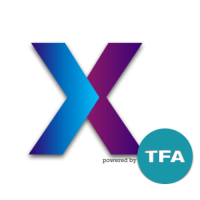“I wish my students were more creative.”
I was recently conversing with colleagues about instruction and this statement was uttered. As different people shared suggestions, advice, and similar experiences, music began playing in my head. It was the same song that had been part an innumerable number of my Apple Music playlists since it debuted in June 2021.
“Pardon Me” from Evidence’s album, Unlearning Vol.1, is a remarkable song for many reasons. Not only do Ev’s lyrics give you food for thought, but the instrumental gives you something smooth to bounce your head to. However, it’s not just Ev’s contributions that have kept this song on repeat on my phone and in my head. At the end of song, he uses a sample from a Red Bull Music Academy conversation with James Mtume. As an artist who epitomized creativity, Mtume breaks down what he has found to be the key to the creative process.
When applied to classrooms, this simple approach could help us answer the continually bedeviling question…
“I wish my students were more creative.”
Imitation
I don’t care who you are, where you come from, I don’t care if you’re an artist…musician, poet, painter sculptor…There’s somebody you see and you say, “Damn, I want to do it just like that.”
James Mtume
You don’t teach anyone to be creative. You allow someone to be creative. Creativity is a natural part of being. Placing learners in positions in which they’ll have to solution find gives them avenues and opportunities for creativity. However, creativity isn’t Hulu. It isn’t on command. There’s a process, a system.
Imitation comes from inspiration. It’s absolutely the genesis of being able to create from a more original perspective. Too often learners are chided for “copying” but we wouldn’t chide someone for following their grandmother’s chicken soup recipe, would we? It’s something that we know works and replicating it serves a purpose. Also, after repeating the recipe over and over again, one would make small changes due to personal preferences.
To go further, music prodigies begin by playing standards. They very rarely, if ever, begin by writing original songs. They learn by getting good at imitation. “Copying” isn’t bad. It’s a necessary step to helping our learners find their own voices.
Instead of dissuading imitation, encourage dialogue about imitation.
Questions to consider as we imitate:
- How do you think the artist wanted us to feel as we experienced their work?
- Who do you think inspired this artist? What evidence do you have to support this?
- Which materials or processes do you think the artists used to create this? How do you know?
- Which materials or processes might we need to imitate what the artist created?
Prince was one of the most creative musicians ever, but he had "influences" aka people he imitated.
Emulation
You still have that other person as your main influence, but you’re starting to find a little bit of yourself.
James Mtume
Grandma’s chicken soup recipe didn’t come from grandma. It was something she imitated and tinkered with to her tastes. In short, she emulated. There’s plenty in the recipe that she “inherited” and then she started to put her own spin on it. Embracing this fact allows us to rethink how we consider the creative process and the “speed” of creativity.
As an instructional designer, embed opportunities that encourage learners to examine a recipe and then find places to sprinkle changes to it. This allows them to target opportunities for originality without having the pressure of being entirely “original.” Think of it as teaching your learners how to cover a more famous band’s song. You might use the same lyrics, but you might change the tune. You might use the same tune, but change the lyrics. You keep something that makes it familiar, but add a bit of your style to the mix. There are lots of covers of songs that are actually more popular than the originals or serve to highlight that the original song is actually pretty dope. Think Roberta Flack and L-Boogie.
Questions to consider as we emulate:
- How could we change how this art “feels?”
- Who is the intended audience for this art? How could we change the intended audience?
- What if we changed the medium used to create this art?
Innovation
And if you’re fortunate enough, you go to the third state: innovation. That’s where you establish who you are and that’s a result of all those things that go through your funnel.
James Mtume
Imitation? Check.
Emulation? Check.
Now, we can start innovation. It’s the adding your own signature. It doesn’t have be “invention.” It could be application. I always think of music producers here. Different producers have different signatures. When you hear it, you know that’s a Just Blaze , DJ Premier, Timbaland, The Alchemist, or WondaGurl beat. They might not have invented the instruments, the processes or the sounds, but their applications of these concepts allows them to create something that approaches originality.
Everything is a remix. It’s just giving learners the latitude to solution find in ways that gives their version of the song a chance to be heard.
Questions to consider as we innovate:
- What are you feeling?
- How do you want to make others feel?
- What are things that inspire you?
- Who are collaborators that help with your vision?
- Which tools or processes might you experiment with?

